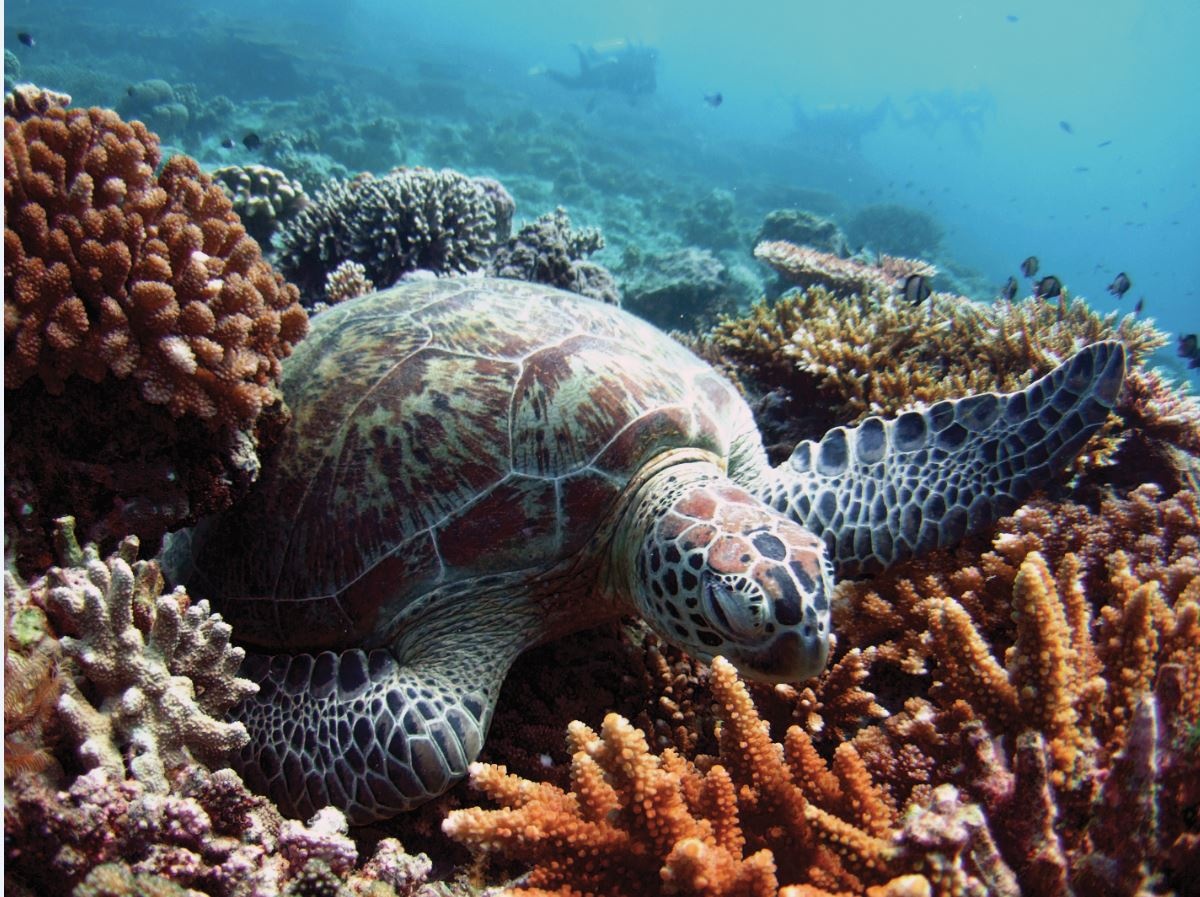Purpose of reefs
Artificial reefs have been created for different reasons, namely:
- Ecological development
- Fisheries
- Coastal protection
- Recreation
- Multipurpose

Ecological development
The first advantage of reefs is the biodiversity and productivity. The dense population of fish is ideal for fishing, recreationally and commercially. Because of this, fishers have created artificial reefs for many years. This advantage has been used to revive some parts of water bodies as many of the natural reefs are deteriorating. The artificial reefs created new (compensating) ecological values and increased the biomass in an area in and around the reef. Moreover, the flora and fauna on reefs can have a strong purifying effect to the water. However, there is debate on how effective these reefs are.
Fisheries
As mentioned, reefs attract fish. Therefore the fishery industry can use artificial reefs to create fish spots. Also species as mussels do well on certain type of reefs. Reefs in favour of the fishery industry are especially used in South-East Asia.
On the other hand artificial reefs can be used to protect the seabed from (trawling) fishing. By placing reefs accurately fishermen can be kept out of certain areas. At the same time the positive effect of the artificial reefs can benefit the fishery industry as well.
Coastal protection
Another reason for an artificial reef is coastal protection. At some coasts the waves just crash directly onshore, causing a lot of erosion. By constructing a reef a couple of 100 meters offshore, the waves are breaking earlier, the wave energy dissipates, so less forceful waves enter the coast. This has effect on coastal erosion, swimmers safety and surfing circumstances.
Recreation
Reefs are very popular for marine recreation like surfing, diving and fishing. Artificial reefs can enhance the recreational value of an area greatly and also add to the economical benefits. Moreover, artificial reefs situated near natural reefs can spread the recreational activities between the natural and artificial reefs. By doinig so, less stress is put on the natural reefs and they get the possibility to regain their strengths.
Surfing does, however, ask for a different type of reef than diving and fishing. By placing an artificial reef properly, a reef can improve the quality and the occurrence of surfable waves. Reefs can increase the wave height at breakpoint, they can influence the breaker type and promote a progressively breaking rideable wave.
Multipurpose
A last type of reef is a multipurpose reef. As the name indicates, the multipurpose reef serves more functions. Most often a multipurpose reef indicates a reef that is both created for surfing as for coastal protection. The dissipation of the wave energy and the prolonging of the wave length improves the surf quality and coastal protection. Especially in Australia a number of multipurpose reefs are constructed. Bournemouth (UK) is the first artificial reef in Europe to be used as a surfing and coastal protection reef.
